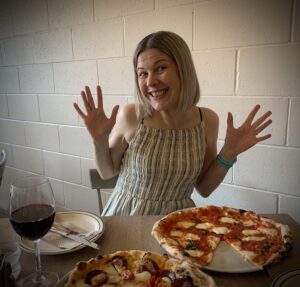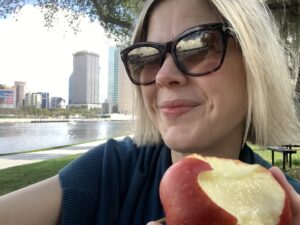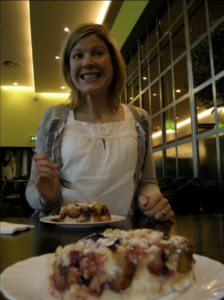Food: can we label it as good or bad?
In my practice, I hear a lot of expressions of foods being good or bad, and often a lot of guilt attached to those statements as well. And, I’ll be honest, I’ve fallen prey to some of those same thoughts at various times in my life too.
But is it true?

Food is more than just food
Are foods actually black and white?
In some respects, that’s not an easy question to answer.
For sure, there are foods that are definitely going to be better for overall health, including whole foods, high fibre foods, more plant-based foods, foods from the ground, etc., etc..
But, as a person with type-1 diabetes, who grew up in the 1980s when diabetes management was all about food restriction… and as a person with T1D who has personally gone through the detriments of diet culture… and as a person with T1D, who is also a dietitian for others with T1D, I strongly state:
No food is off limits.
Food is not good OR bad.
Food is often tasty, sometimes nasty. It is social. It is comfort. It is blood sugar management. It is nutrients. It is memories. It is subjective.
Do you see what I’m saying?
Food is so much more than just one label. It is a whole lot of things.

Food is not the enemy
Diet culture (and even blood sugar management culture) loves to have us believe that some foods are the enemy, and that some foods should absolutely not be touched. But, I disagree.
Take that as you will. But quality research has shown solid evidence of the detriments of overly restricting foods. My own personal, unintentional research has shown the same. Detriments such as:
- Excessively overeating those same foods when re-introduced
- Poor social quality related to the eating environment
- Increased fears of eating
- Poor quality of life related to food
- And, actually, challenges with blood glucose management due to undernutrition or stress of eating
Yes, a white-flour bagel is likely going to shoot my blood sugars up so much quicker than a slice of whole grain toast. But, if I balance that bagel with vegetables on the side or lean protein, it’s going to help slow down the rise. Because, now I’ve boosted the fibre and protein, both of which help slow down a blood sugar spike. Or, if I combine the higher level of carbs with a 15 minute walk after eating, that’s also going to help smooth out the overall management.
This is just one example, but I could use the same thought mechanisms for things like chocolate, ice cream, and other low-fibre carbs – it’s all about balance, most of the time, not all of the time. If I have a scoop of ice cream, and don’t pair it with any of the suggestions from above, that’s okay too, because it’s not something I’m having all the time!

Respecting food. Respecting you.
Friends, we need to start looking at food in a different light.
We need to respect food. We need to honour it, and recognize that food is so much a cultural aspect to our lives, and that it is necessary to our lives. If we are constantly fighting food, we will constantly be fearing it. We will be thinking of it in terms of suffrage, and it will constantly be fighting us.
That is not a good place to live.
So, from this day forward, let’s really try to enjoy what we are eating and the environment that we are eating it in. Let’s try to balance our meals as best we can most of the time (think, 70-30%), but still leave some room for flexibility.
By doing that, we will also be reducing the stress of eating, which will also help with overall diabetes management.
Happy eating!

